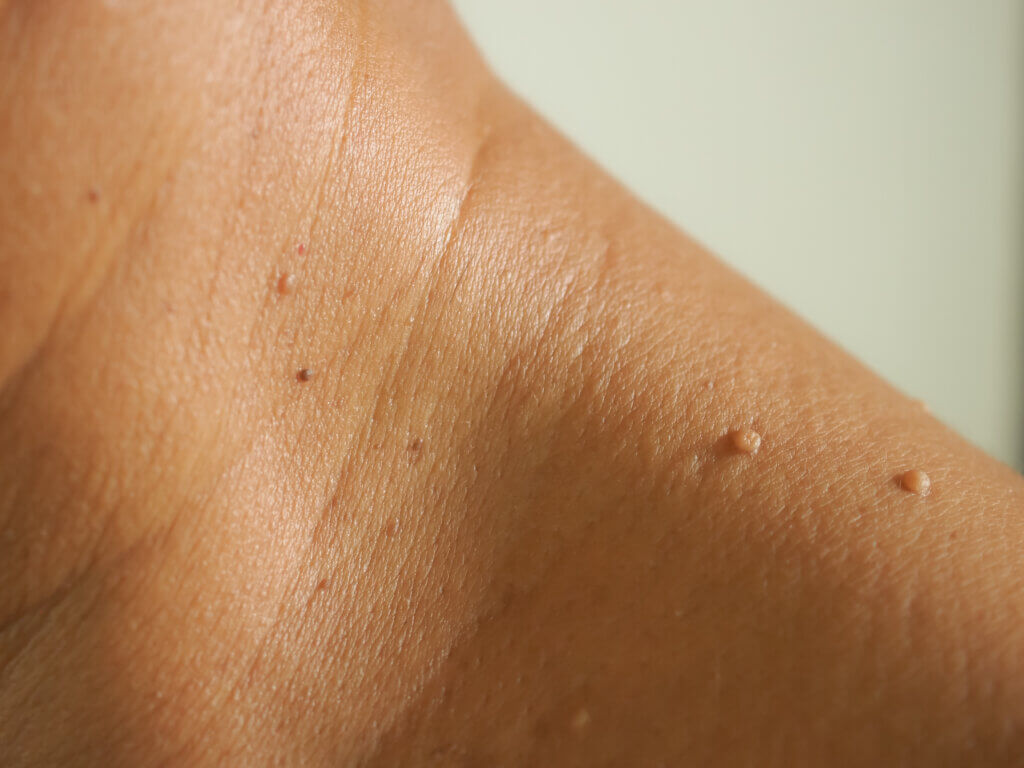Whilst these marks are usually unnoticeable and easy to manage if they are inconveniently placed, they can cause physical annoyance and negatively affect self-confidence.
Skin tags are usually found in areas of high friction on the skin, such as underarms, the neck, under the breasts, eyelids, around the groin, and other skin folds. The size of the skin tag is unpredictable as it could enlarge but continue to be painless or enlarge and become an irritant due to friction and pressure. They pose no risk to your health and are not contagious.
Skin tags are made of loose collagen fibres and blood vessels surrounded by skin. Both men and women can develop skin tags. They are more common in older people, obese people, and those with type-2 diabetes. Whilst pregnant women are also more likely to develop skin tags due to changes in their hormone levels.
There are a couple of ways to remove skin tags. One standard method is using a plasma pen. Here, a physician holds a plasma pen above the designated area. The pen generates plasma energy that penetrates the skin’s layer, causing the mole or skin tag to fall off within a few days. The procedure is virtually pain-free. You may feel the warmth on your skin during the process, but it won’t feel uncomfortable.
Another common option is cautery. This exact technique vaporises the skin tag away whilst cauterising the incision. At Bodyvie, our cauterising device is called the PlexR. The PlexR not only removes and cauterises the skin tag but also fuels collagen production for the skin to restore a healthy and supple appearance.
Removing any skin tag is always judged on an individual, patient-to-patient basis. One of our skin specialists will perform a thorough analysis to advise you on the best route for your particular needs and treatment.















I received Skin Tag Removal treatment at Bodyvie, and a number of skin tags had been removed successfully. The process was very effective and pain-free.